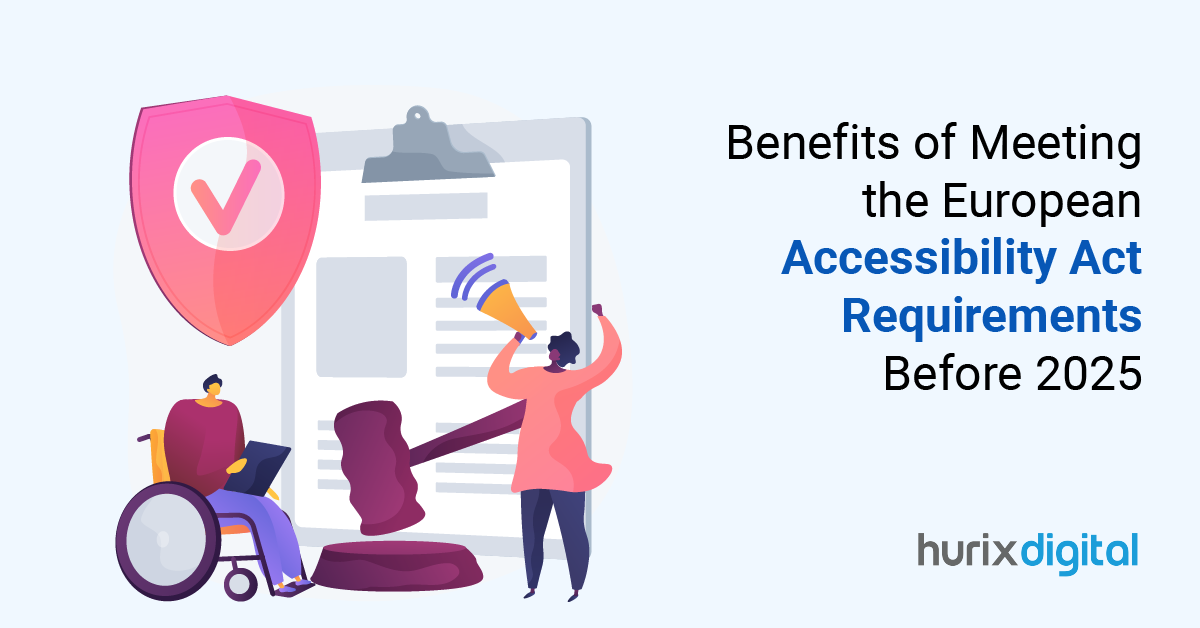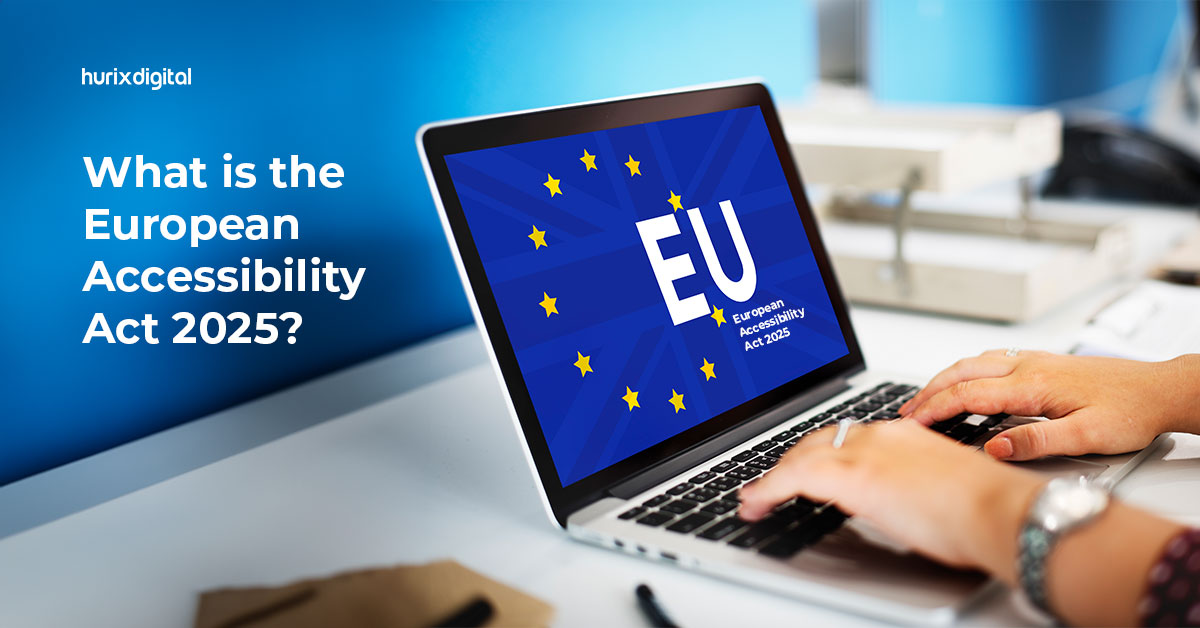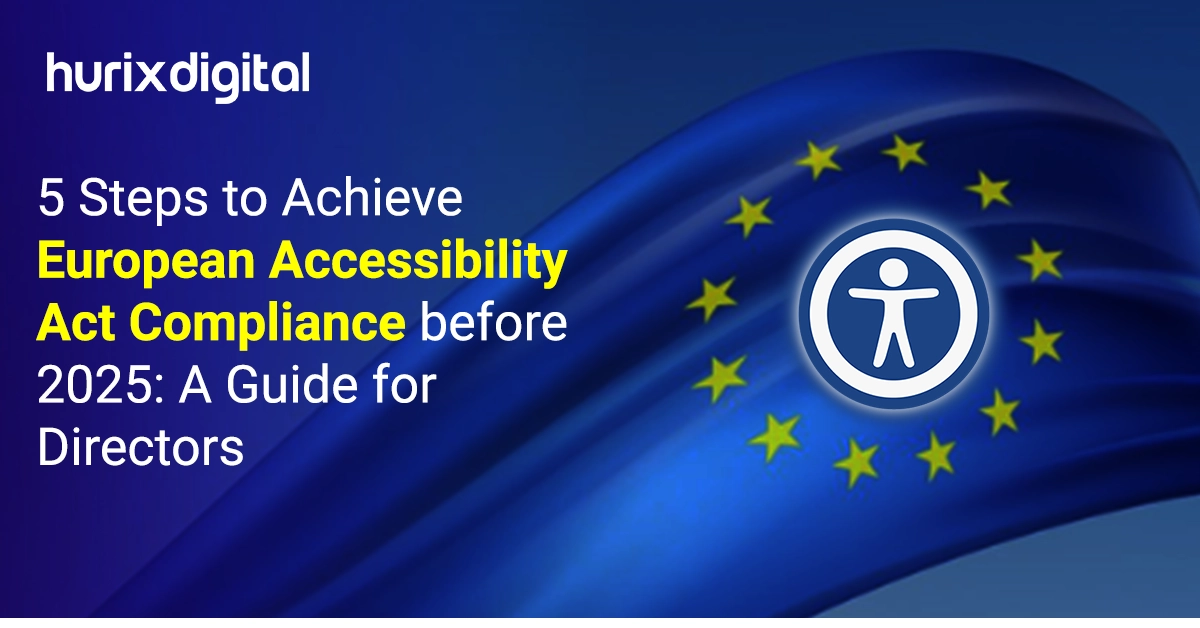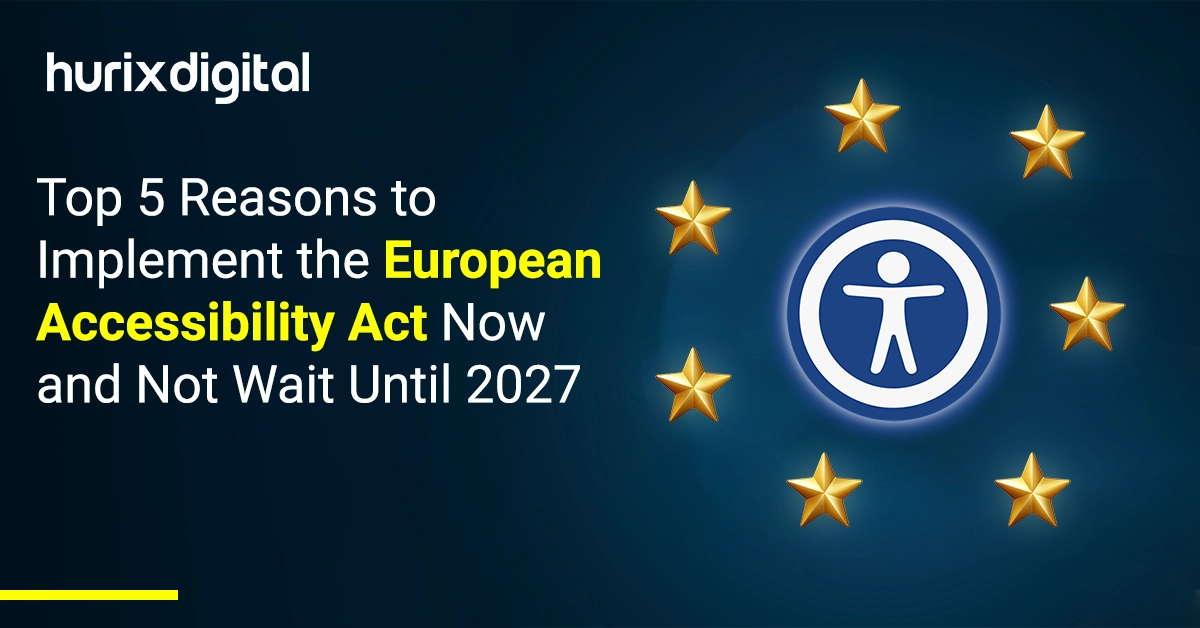
Benefits of Meeting the European Accessibility Act Requirements Before 2025
Summary
This blog covers the European Accessibility Act 2025, aiming to make digital products and services accessible to people with disabilities in the EU, outlining requirements and benefits.
The perks of the internet are not fully accessible to many individuals with disabilities due to barriers that persist despite a growing consciousness of online accessibility and inclusiveness.
The European Accessibility Act, or EAA, is the European Commission’s strategy for closing this accessibility gap. The project, which is expected to go into effect in June 2025, lays out new inclusion rules designed to stop the disenfranchisement of people with disabilities as we head into a future that is becoming increasingly digital.
Businesses operating within EU states designated by the act must prioritize internet accessibility to stay compliant. This blog outlines everything you need to know about the European Accessibility Act 2025.
Let’s dive in!
Table of Contents:
- An Overview of the European Accessibility Act 2025
- Uses of the European Accessibility Act
- European Accessibility Act Requirements for Companies
- Benefits of Early Accessibility Compliance
- Takeaway
An Overview of the European Accessibility Act 2025
The European Union enacted the European Accessibility Act as a regulatory structure to provide basic accessibility standards for a range of products and services that will help people with impairments.
27% of EU adults over 16 had a disability in 2022. That comes up to 101 million individuals, or one in four adults in the EU, based on figures from Eurostat. The goal of the EAA 2025 is to provide complete access to digital and technological amenities, like ATMs and financial applications, for as many of these people as is feasible.
Also Read: Editorial Managers’ Handbook to Accessibility Remediation and Testing
Uses of the European Accessibility Act
The European Accessibility Act 2025 seeks to promote a more varied market environment that invites individuals with one or more impairments across a wide range to engage in today’s world fully. Some of the use cases of this act are:
1. Online Accessibility
This will entail companies covered by the EAA making sure websites and digital services are accessible and adhere to the WCAG’s (Web Content Accessibility Guidelines) fundamentals.
2. Audiovisual Media Accessibility
Businesses that manufacture broadcast devices or supply services associated with them are required to include accessibility features like closed captioning and subtitles in their products.
3. Financial Services Accessibility
2025 accessibility compliance benefits include simple, autonomous accounting procedures for people with disabilities. This implies that considerable accessibility modifications will also be needed for both online and offline financial services. For example, auditory aids are necessary for ATMs to facilitate easy use by the visually handicapped.
4. Assistive Technology
The EAA demands that digital goods and services, including voice recognition software, be more compatible with assistive technologies.
5. Digital Communication
People with disabilities must be able to access and use the main forms of online communication readily. Email, messaging apps, cell phones, and other devices are included.
European Accessibility Act Requirements for Companies
Companies across various sectors need to follow mandatory requirements to experience the advantages of accessibility compliance. Here are a few EAA requirements:
1. Web Accessibility
If your company has an online presence, its website must adhere to the Web Content Accessibility Guidelines (WCAG). You must also ensure that everyone can access your online store.
E-commerce websites need to ensure that accessibility standards are followed throughout the user experience, from the technical architecture to the aesthetic overlay. Best practices for accessibility in these areas should be incorporated for pages to be mouse-free and usable.
2. Design of Products
Products like ATMs and iPhones need to be made with accessibility in mind. These devices contain functions for visually impaired individuals, such as audio-assisted purchases. For example, if your business produces ATMs, they now have to support audio-assisted payments.
This can entail an audio jack and voiceover menu selections to enable visually impaired individuals to finish tasks on their own.
3. Accessibility of Services
The Act requires that all services, including transit and Internet banking, be accessible. This includes the applications and other online platforms that these services are accessed through.
For instance, if you provide internet banking solutions, your smartphone app should support spoken instructions and screen readers. Functions like reviewing account balances and routing payments should be completely accessible.
Benefits of Early Accessibility Compliance
Companies that need to update their accessibility and inclusivity must do so by June 28th, 2025. The adjustments necessary for full EAA 2025 compliance will often be substantial, so you need to get started as soon as possible. Here are the European Accessibility Act benefits:
1. Increased Market Capability
Businesses can reach a wider market segment by ensuring their goods and services are accessible to people with disabilities. According to the European Disability Forum, approximately 100 million people with disabilities live in the European Union.
Through early compliance with the EAA, businesses can enhance their market reach and customer base by attracting potential clients and meeting their demands.
2. Adherence to Law and Risk Reduction
Adhering to the EAA laws on early accessibility helps enterprises steer clear of any legal penalties.
Websites and electronic communication services are only a few examples of digital methods of communication for which the EAA establishes obligations. Businesses can make sure they comply with the law by proactively fulfilling these obligations.
3. Improved Image of the Brand
Showcasing an accessible commitment can improve a company’s reputation. Prioritizing the needs of people with disabilities allows businesses to present themselves as socially conscious establishments.
Customers, both with and without disabilities, are more likely to support inclusive businesses. By adhering to the EAA early on, businesses can foster consumer loyalty and improve their brand image.
4. Enhanced User Experience
In addition to helping those with impairments, accessibility compliance enhances the user experience for all clients. Businesses can make their offerings more intuitive and user-friendly by designing them with accessibility features in mind.
Features that assist all users, such as keyboard navigation, alternate text for images, and movable text sizes, can increase overall user engagement.
Read EXCLUSIVE Success Story: Hurix Digital Enhances Accessibility for Over 100,000 Students for a US-Based Community College
Takeaway
With so many requirements to meet, the European Accessibility Act 2025 deadline could appear far off, but we strongly advise getting started as soon as feasible.
Moving quickly not only gives companies time to fulfill regulatory requirements but also enables the progressive adoption of required modifications, the distribution of associated expenses, and the avoidance of interruptions.
Partner with Hurix Digital to elevate your accessibility solutions and make your business regulatory-compliant. From designing an accessible website that complies with the prevalent web accessibility guidelines to conducting seamless accessibility audits, we provide end-to-end solutions for enhanced UX.
Learn more about our complete suite of accessibility solutions. Book a demo call with us right away!

Associate VP of Technology, leads the design and development of innovative and accessible web solutions for publishing and eLearning clients. With over 20 years of experience in the ITES industry and a strong background in project management, automation, quality assurance, and offshore collaboration.








